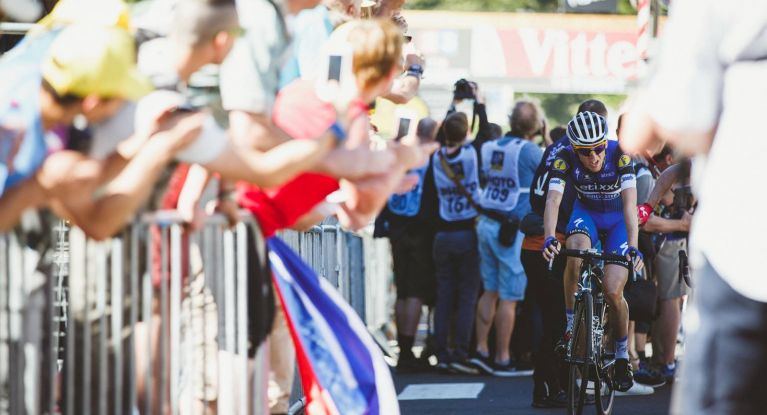
Why hasn’t Peter Sagan won the Tour de France? Why is Chris Froome not riding Paris-Roubaix? How is watching 200 men in skin-tight suits riding from one place to the next in the least bit exciting?
These are just a few of the questions a cycling fan can expect to be bombarded with from the start of the season until it rounds up in the autumn. Cycling is, as any studious fan knows, a multi-faceted sport which offers something for riders and fans of all shapes and sizes. It is a sport in which a tiny fraction get to taste success, especially in the Sagan era, backed up by whole teams of helpers, better known as ‘domestiques’, whose personal glory is sacrificed for their leader.
The clearest distinction in terms of rider type is between Grand Tour and classics specialists, although, as we shall see, there are still crossovers. Let’s take a look at these two rider groups from the two Specialized supported teams and see how they compare.

Classics
For a very long time, the Belgian-registered Quick-Step team has been considered an out-and-out classics squad, resplendent with names such as Boonen, then Terpstra, Stybar, and now Gilbert. These riders are nearly all big, strong and powerful one-day racers capable of going all-or-nothing for several hours over the toughest terrain, without much help from a team.
Over at Bora-Hansgrohe, we have the King of Cool, back-to-back world champion, Peter Sagan, whose consistency is superior to anyone else racing today. You just have to look down his results each season to recognise this. Yes, he has a perhaps frustrating collection of second places, but that alone is testament to his reliability on the road, not to mention his five straight green jerseys at the Tour de France.
Perhaps barring Sagan, who is more-or-less a free agent in stage racing, classics specialists tend to revert to domestique roles as the season unfolds, taking responsibility for drilling it on the front of the peloton for their Grand Tour leaders, keeping them out of the wind and fetching bottles. There will of course be the odd stage that suits them here and there, but the endurance required for Grand Tour success overall is beyond the bounds of a competitive classics specialist.

Grand Tours
The most glaring distinction between a classics specialist and a Grand Tour racer is the comparative size and shape. Stand the hulk-like Peter Sagan next to his diminutive teammate Rafal Majka and you can tell immediately that they’re not going to be competing for the same prizes. Where Sagan’s fast-twitch muscle fibres allow him to accelerate faster than a bullet from a gun, Majka has developed an efficiency and endurance that enable him to ride into the red for extended periods of time, suited to long and hellishly mountainous stages on the Grand Tours. Joining Majka in the Bora Grand Tour stable is Czech workhorse Leopold König who proved himself in the mountains in service of Chris Froome with Team Sky last season, and this year will ride for himself, starting at the Giro d’Italia in May.

Over at Quick-Step Floors however, the lines blur slightly between the two disciplines. Here, we must distinguish between the Flanders and Ardennes Classics. The latter are better suited to puncheurs and stage racers, although you wouldn’t put Peter Sagan past getting a result at some of them. Two Quick-Step riders in particular have excelled at both the Ardennes Classics and stage races. Julian Alaphilippe has run second at La Flèche-Wallonne two years running and has also won the Tour of California. His teammate, Dan Martin, finished just inside the top-10 at last year’s Tour de France, adding to his two Monument wins and the overall victory at the Volta Catalunya 2013.
One final distinction we can make between these two groups of riders, is in the equipment they choose. For ultimate speed and power transfer, many Classics specialists will go for the S-Works Venge ViAS, unless the parcours is particularly cobbly, in which case the groundbreaking S-Works Roubaix will be their steed of choice. Down in the Ardennes or further south into France, Italy and Spain, you will find the Grand Tour specialists upon the tried and tested S-Works Tarmac for lightweight efficiency.
Do you fancy yourself a classics or Grand Tour type of rider? Check out some of the bikes that might suit you just as well as they suit the pros.